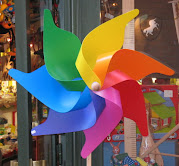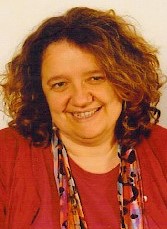We have been walking aorund in an overcast Berlin and seem to have already packed masses in to the day and it's not yes 18.00. Time now for a rest and a think.
The flats where we are staying overlook the extraordinary memorial to the murdered Jews of Europe, just around the corner is the Brandenburg Gate with on one side Unter den Linden and on the other the Strasse des 17ten Junis ... We caught a bus this afternoon on the corner of Rosenstrasse, where the non-Jewish wives of Jewish imprisoned men protested against the imprisonment of their husbands just around the corner from the Gestapo headquarters. Read more here and in Nathan Stoltzfus' book Resistance of the Heart.
We spent time going around the exhibition about the path to German parliamentary democracy in the German Dom on Gendarmenmarkt, (the English title is: Milestones - Setbacks - Sidetracks and the German title Wege - Irrwege - Umwege). This was the exhibition that used to be housed years ago in the Reichstag before the wall came down and the German parliament finally moved back there. It was interesting to go around it today with young people who are about the age I was when I first went around it with my father. Some of the most powerful images were those of the total destruction of German cities at the end of the war.
Looking the French Dom opposite led us to talk about the French Protestant refugees who had been welcomed by the Elector of Brandenburg following persecution in France. And then we went on to Bebelsplatz and looked down through the glass in the ground onto the completely empty bookshelves beneath - this, the square just next to the Kaiser's palace and opposite the university, is where the Nazi's famously burned books early in the Third Reich. Yet thousands walk past without even noticing this very discreet monument or memorial ... walking over history.
From here we walked up the Unter de Linden and went in to what was formerly the tomb of the unknown soldier following the first world war and which became a memorial to the victims of fascism in GDR times and which now - rather than an eternal flame and goose-stepping soldiers - houses an absolutely wonderful and desperately powerful sculpture by Käthe Kollwitz with the simple dedication "to all victims of war and violence". I had never been inside before and didn't know about this change which deeply moved me. The scupture shows a woman cradling her dead son. Not only the male soldier "heros" of war are remembered but the ordinary families suffering violence, a huge difference in how history can be viewed and the conscious placing of women at the heart of remembrance.
After that we headed to the Reichstag, for coffee and cakes, but also to show the family Richard Rogers' extraordinary dome. The building of parliamentary democracy in Germany has become a worldwide tourist attraction, it really makes the building belong to the people, makes what happens in the building a bit more attractive too. Politics can become a bit more fun if its architecture is like this.
So our day has been a little bit like an exercise in a historiography of public buildings and official monuments.
Walking up and down in the dome, looking across the once divided city, seeing the golden domes of the synagogue and cathedrals, looking at the hideous and beautiful highrise buildings of capitalism and socialism, the victory column and gate of the princely past and the huge sky, I thought about the huge discontinuity and continuity that are part of German history. Then I wondered about how nations build up national myths of continuity - some have integrity, others less so. What is amazing about wandering around the central parts of Berlin is how the ambiguity of continuity and discontinuity are made visible in the ways exhibitions are organised and memorials are built.
How do we live with history? My neighbour in Ferney recently said to me "We need to remember that wherever we put our feet the dust we are walking through is the dust of humanity". I felt that very much today walking around the city where my father was born. He was 15 when he had to leave and yet this is the city his daughter still wants to return to. My way of living with history perhaps.
Monday, 5 April 2010
History: how do we live with it?
Publié par Jane à l'adresse 17:30
Libellés : Berlin, history, translation, Travel
Subscribe to:
Post Comments (Atom)






1 Comment:
Frohe Ostern, Jane! Ich freue mich für dich,dass du wieder in Berlin bist, in der Stadt, mit der dich so viel verbindet. Übrigens unterrichte ich am Käthe-Kollwitz-Gymnasium ...
Liebe Grüße
Petra.
Post a Comment